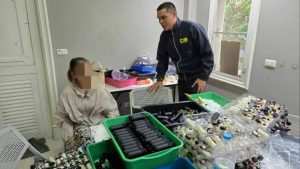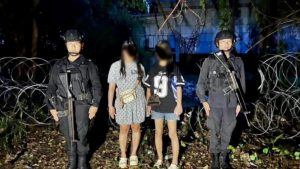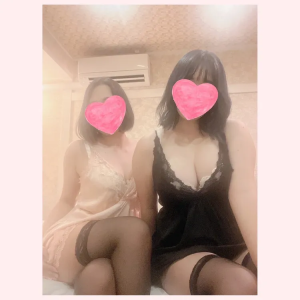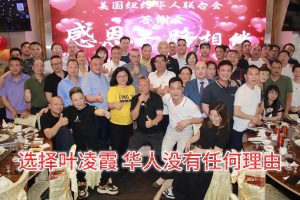The water level of a reservoir in Sichuan has dropped and the “Underwater Buddhist Kingdom” has reappeared. The Buddha statues and stone lions are lifelike. The cultural relics protection staff said: It has been more than ten years since the past half century.
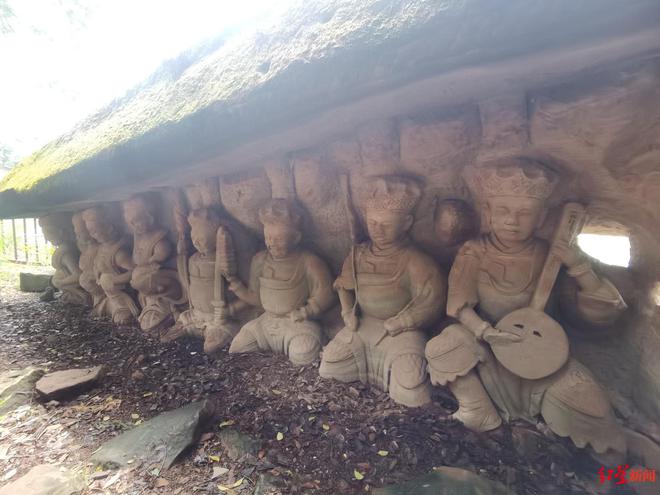
Recently, due to the drop in water level, the underwater Buddha statues and stone lions of the Shufangba Reservoir in Anyue, Sichuan, have reappeared, and this “underwater Buddhist kingdom” has once again attracted the attention of netizens.
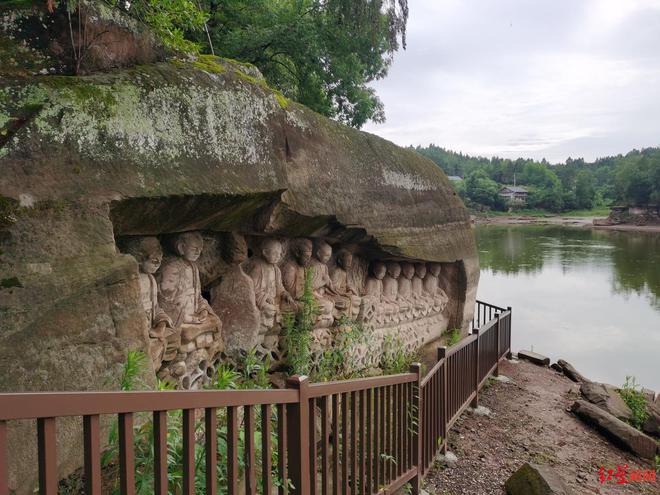
On June 19, a Red Star News reporter visited the site and learned that this “underwater Buddhist kingdom” became “popular” after being known to the outside world in 2020. Deng Yongfu, a local cultural relic protector, said that since the reservoir was filled with water in 1974, the submerged cliff statues of Foji Temple have exposed the Buddha’s head almost every year, and the stone lions on the lower ground have been fully exposed for more than 10 years, with an exposure time of two or three months each year. Since 2020, there have been three years of complete exposure.
For the Buddha statues and stone lions exposed above the water, relevant staff of Anyue Grottoes Research Institute told Red Star News reporters that experts recommend not to destroy the original appearance and implement underwater protection. During the period of exposure to the water, burning incense and worshiping Buddha should be prohibited, and cultural relic protectors should be set up.
Cultural relics protection officer tells:
Half a century ago, the Buddha’s head would be exposed during the dry season of the reservoir
The cliff carvings of Foji Temple were identified as a provincial cultural relic protection unit in Sichuan Province in 2012. Today, 76-year-old Deng Yongfu is a cultural relics protection officer here and a local resident.
He told the Red Star News reporter that after the Shufangba Reservoir was filled with water in 1974, a pair of stone lions and a cliff carving on a boulder in Foji Temple were submerged in water. But almost every year during the dry season, the Buddha’s head of the cliff carving will be exposed above the water. In drought years, the submerged cliff carvings will be fully exposed, and the pair of stone lions on lower ground will also be exposed.
“(The submerged cliff carvings and stone lions) have been fully exposed for more than 10 years, exposed for two or three months every year, and will be submerged again after the water rises.” Deng Yongfu also said that since 2020, the submerged cliff carvings and stone lions have been exposed almost every year, and they have been fully exposed for three years. Because of the attention from the outside world in recent years, tourists come to visit every year during the dry season.
It is understood that Anyue Grottoes began in the Southern and Northern Dynasties and flourished in the Tang and Song Dynasties. There are more than 230 cliff carvings with more than 100,000 statues, enjoying the reputation of “China’s Stone Carving Hometown”.
Experts suggest not to destroy the original appearance and implement underwater protection
On June 19, a reporter from Red Star News saw at the site of the Foji Temple Cliff Carvings that more than 20 Buddha statues carved around the stone lions and a huge stone were fully exposed this year. The stone lions holding the hydrangeas sat facing each other by the reservoir, as if they were talking. The Buddha statues around the huge stone were different and lifelike. On the cliffs with higher terrain, there are also some cliff carvings that can be seen all year round.
According to the news released by Anyue officials in 2020, the Shufangba Reservoir was built in the 1970s and has a catchment area of more than 130 square kilometers. After the completion of the reservoir, some of the Buddha statues distributed on the edge of the water were submerged in the water. Among them, the historic Shengdeng Temple was submerged, thousands of Buddha statues drowned in the water, and the Luohan Temple and Foji Temple were partially submerged. In the dry season, Buddha statues often emerge from the water, while some are forever hidden under the water.
In 2020, the “Underwater Buddhist Kingdom” of Shufangba Reservoir attracted attention because the cliff statues of Luohan Temple and Foji Temple “saw the light of day again”. Among them, the Foji Temple cliff statues have 29 niches, 69 statues, 1 stone pagoda, and 4 inscriptions. The caves were excavated in the Qing Dynasty, and the statues are mainly Luohan, Ten Bodhisattvas, Seven Buddhas, Heavenly Kings, Maitreya Buddha, etc. The Luohan Temple cliff statues have 43 niches, 155 statues, 3 relief stone pagodas, and 9 inscriptions. The caves were excavated in the Tang Dynasty and continued to be carved in the Song Dynasty.
On June 19, relevant staff of Anyue Grottoes Research Institute told Red Star News reporter that, especially in recent years, Foji Temple and Luohan Temple will emerge from the water during the dry season. For this reason, experts suggest that underwater protection should be implemented without destroying the original appearance. During the period when the temples are exposed to the water, burning incense and worshipping Buddha should be prohibited, and cultural relics protection officers should be set up. At present, Foji Temple, a provincial cultural relic protection unit, has a dedicated cultural relic protection officer, and Luohan Temple, a cultural relic site, has a local spontaneous administrator. In addition, monitoring and other facilities are installed on site to strengthen protection through “human defense, technical defense, and dog defense”. In addition, in order to better protect these cultural relics, they will also consider on-site environmental improvement, etc.
The “Buddha’s Eye” lost for a hundred years in Yungang Grottoes returns: a man encountered it by chance on a street stall
A suspected Buddha’s Eye that had been scattered for a hundred years returned to Yungang Grottoes not long ago.
This ceramic eyeball covered with black glaze is still shiny and looks like the ceramic eye that is still in place in Yungang Grottoes.
The donor of this ceramic eyeball is Tian Yijun, a citizen of Taiyuan. In 2006, Tian Yijun came across this black pottery at an antique stall on the roadside outside the Datong Stadium. The seller didn’t know what it was. Tian Yijun knew something about ancient porcelain, but had never seen this type of vessel before, so he bought it out of curiosity.
It was not until nearly 20 years later that Tian Yijun accidentally saw a photo and found that the pottery eye of Yungang Cave 8 hidden in the Institute of Humanities and Social Sciences of Kyoto University in Japan was very similar to the pottery he bought many years ago, so he took the initiative to contact the Yungang Research Institute. If it is confirmed to be the Buddha’s eye of the Yungang Grottoes, he expressed his willingness to donate it free of charge.
In March this year, Zhao Kunyu, chairman of the Yungang Grottoes Protection Foundation of Lingyan, Shanxi Province, and former director of the Yungang Grottoes Museum, was entrusted to go to Tian Yijun’s home to see the pottery eye and bring it back to Datong for identification.
There are still many issues worth discussing around the identification of the identity of this pottery eye and the whereabouts of more Yungang pottery eyes.
Buddha Eye Controversy: Is it a Liao and Jin Cultural Relic or a Porcelain Paddle?
After the information about the return of the Yungang Buddha Eye was disclosed, some netizens raised doubts. Some people thought that this pottery looked like a porcelain paddle. Porcelain paddles are tools used to beat the surface of pottery when making pottery.
In fact, this possibility was taken into consideration at the beginning of the identification work. Zhao Kunyu told China News Weekly that after the pottery arrived at Yungang, it was repeatedly discussed by experts. The first possibility considered was a grinder or a porcelain paddle. Porcelain paddles usually have a flat surface, while this artifact is obviously convex and spherical, with a delicate glaze on the surface and a bright surface.
As for the guess of the grinder, in order to achieve the grinding effect, the grinder is generally made into a coarse tooth surface like a millstone, and there is no trace of grinding on the surface of this pottery. Moreover, the artifact comes from the Datong area. Experts tend to believe that it is a Buddha Eye, but other functions are not ruled out.
“Why? Because unlike other ceramics that can be compared, pottery eyes have few typical characteristics, and there is a serious lack of reference cases.” Zhao Kunyu said that in recent years, the Yungang Research Institute has been committed to conducting in-depth investigations and tracking of lost statues. “If this artifact is indeed the Yungang Buddha’s eye, then we are lucky and have won a rare opportunity; if not, it also provides a reference for future research on the eyeballs of statues. Cultural relic identification itself requires constant demonstration.”
Zhan Changfa, former vice president and second-level researcher of the Chinese Academy of Cultural Heritage, has presided over many national stone and cave heritage protection research and restoration projects. He told China News Weekly that the identification of pottery eyes requires a comprehensive analysis of artistic style, material technology, archaeology and scientific and technological means.
For example, in terms of artistic style, the artistic style of pottery eyes can be compared based on the characteristics of the slender eyes of the Yungang Grottoes Buddha statues and the style characteristics of statues in different eras. In terms of material technology, the material of the cave Buddha statue has regional characteristics. If the material composition of the suspected eyeball is consistent with that of a specific cave, or contains the same special additives, it can be used as a basis for identification; if the eyeball painting style or carving details are consistent with the specific cave technology, the source relevance can also be traced.
Some archaeological and scientific analysis methods can also come in handy. Zhan Changfa said that through spectral and mass spectrometry analysis, the material composition of the Buddha’s eyes can be studied in detail, and these analysis results can be compared with the cave Buddha material database to enhance the correlation judgment. In 2022, during the renovation of the Longmen Grottoes, archaeologists found glass eyeballs composed of silicon dioxide and lead in the eyes of the statue of Samantabhadra Bodhisattva on the right side of the Vairocana Buddha. After identification, its composition was consistent with ancient glass. It is rare to preserve large pieces of Tang Dynasty glass in the cave statues.
The pottery eyes are not large in size and not expensive, but they give the statues a spiritual look.
The Yungang Grottoes Museum houses several pottery eyes of various shapes and sizes, mainly mushroom-shaped and conical. The largest one is conical, with a diameter of 11.5 cm and a height of 14.4 cm. The suspected pottery eye discovered this time is 7 cm high, with a semi-bead-shaped head, a diameter of 10 cm, and a flat bottom with a diameter of 4.5 cm at the tail, weighing about one pound.
During the Northern Wei Dynasty, the Yungang Grottoes statues were all pure stone sculptures with thin eyebrows and long eyes. The additional eyeballs for the statues were installed from the Liao and Jin Dynasties to the late Qing Dynasty. According to statistics, there are 16 caves in the Yungang Grottoes with 76 statues with eyeballs installed, involving statues of Buddha, Bodhisattva, offering gods, and strong men. Only more than 10 pieces are left today. Judging from the remains, the handles of the eyeballs embedded in the stone sculptures at that time were funnel-shaped and flat-bottomed.
Zhan Changfa said that caves built under the influence of the “Liangzhou Model” and the “Yungang Model”, such as the Dunhuang and Longmen caves, usually did not embed eyeballs in the Northern Dynasties and before, but expressed the eyes through carving or color decoration. In the Song and Jin Dynasties, famous kilns such as Jiexiu Kiln and Hebi Kiln produced hemispherical ceramic “Mani beads”, which may have been used as Buddha eyes. The statues with eyeballs in the Dunhuang Grottoes are generally reshaped in the Qing Dynasty; there is no clear record of the installation of Buddha eyes in the Liao and Jin Dynasties in the Xiangtangshan Grottoes; the existing data of the Tianlongshan Grottoes only record that the Buddha eyes were stolen, and do not explain the assembly technology.
“The Yungang Grottoes are the only grotto temples with solid evidence showing that Buddha eyes were widely installed during the Liao and Jin Dynasties. Other grotto temples have not found similar measures due to lack of historical records or insufficient archaeological excavations.” Zhan Changfa said that this phenomenon is closely related to the special attention paid by the Liao and Jin regimes to the Yungang Grottoes and the development of Buddhist art in the local area, further highlighting the important position of Yungang as a Buddhist cultural center during the Liao and Jin Dynasties.
Drilling holes in stones to install eyeballs is a very technically difficult process. The eyeball installation project during the Liao and Jin Dynasties was closely related to the progress of Buddhist art, the improvement of glass craftsmanship, and the emphasis on the spiritual symbolism of Buddha statues. Zhan Changfa said that while inheriting the Northern Wei style, the craftsmen at that time combined the local aesthetics of the Liao and Jin Dynasties, and especially emphasized the decorative and spiritual presentation of Buddha statues.
For many years, among all kinds of complicated and urgent cultural relics protection work, pottery eyes have not yet become a topic of concern. “The study of Buddha eyes has just begun,” said Zhao Kunyu.
How did the Buddha eyes get lost?
From 1992 to 1993, during the excavation of the site in front of the Yungang Grottoes, a fingernail-sized Buddha eye was unearthed from the Liao and Jin strata. This is the only pottery eye from the Liao and Jin dynasties that has truly come from the Yungang Grottoes, so there is no doubt about it.
This pottery eye may have fallen off naturally. Zhan Changfa said that installing eyeballs on stone statues requires the use of mortise and tenon joints and bonding techniques, which are difficult to preserve and are prone to falling off over time. Therefore, there are few examples of Buddha eyes in the grotto temples, and they are mostly found in the colored sculptures of wood carvings in temples.
In addition to natural shedding, there is also the possibility of human destruction. In the early 20th century, the Yungang Grottoes experienced the darkest period. Foreign illegal cultural relics dealers colluded with villagers to steal Yungang statues on a large scale. The eyes of some statues were originally attached in later generations and were very easy to steal, so they suffered a tragic fate. However, the antique dealers are interested in statues with artistic shapes, not these bare eyeballs. Since they have no circulation value and can’t bring in profits, the robbers often abandon the eyeballs, and only a few are scattered among the people. Over time, ordinary people don’t know what they are. This is why the Yungang Buddha Eye is hard to find even though so many of them have been lost.
Today, the Institute of Humanities and Social Sciences of Kyoto University in Japan still preserves two Yungang Buddha Eyes, both of which were “collected” from Cave 8. One of them is 7.2 cm high and 7.0 cm in diameter. It was originally the eyeball of the reclining Buddha in the upper center of the north wall of Cave 8. In 2006, Japanese scholar Okamura Hidenori disclosed this information for the first time in his book “Yungang Grottoes Relics – Research Report of Kyoto University Institute of Humanities and Social Sciences”. These are the only two Yungang pottery eyes scattered overseas so far.
For a long time, only one Yungang Buddha Eye had ever appeared outside the Yungang Grottoes. In 1985, the Yungang Grottoes welcomed the return of this important Buddha eye.
“I am sending you a Yungang stone Buddha pottery eye.” At the beginning of that year, archaeologist and Peking University Archaeology Department Professor Su Bai wrote a letter to Lu Jimin, then Director of the Cultural Relics Bureau of the Ministry of Culture of China, and wrote this at the beginning. Su Bai introduced in the letter: “This item was given by Mr. Shi Xiehe, retired director of the Nelson-Atkins Museum of Art in Kansas, USA… Many Yungang Buddha pottery eyes have been lost, but this is the only pottery eye known to have been handed down to the world.”
Shi Xiehe is the famous American museum person, Smith, who served as the director of the Nelson-Atkins Museum of Art for 25 years. In the 1930s, when Smith was studying in China, he worked part-time to purchase Chinese art for the Nelson-Atkins Museum of Art in the United States. More than half of the museum’s more than 7,000 Chinese art collections were collected and purchased by him, including the most famous “Queen Worshiping Buddha” in the Binyang Middle Cave of Longmen and other world-class treasures. In 1932, Shi Kemen came to Yungang Grottoes. At that time, Yungang was under strict security and theft was strictly controlled. He only bought a Yungang Buddha Eye from a villager for one dollar.
More than half a century later, Shi Kemen interacted frequently with the Chinese cultural relics community and decided to donate this Buddha Eye after retirement. Through Su Bai’s matchmaking, this Buddha Eye returned to Yungang Grottoes and is still the largest pottery eye in the Yungang Grottoes Museum.
This pottery eye is made of fine clay, with a slightly convex head, a round surface, and a thick black glaze on the surface. A nearly circular pit-like scar was left during the firing, which was the fixing point for bonding the rock when the eyeball was embedded in the eye socket. In order to find a home for this Buddha Eye, Yungang Grottoes researchers studied the statues with empty eyeballs in the entire cave.
Zhao Kunyu said that the main Buddha statue in Cave 19-1 is 7.75 meters tall, and both eyes have been lost, leaving eye holes with a diameter of 10-10.5 cm, which is basically consistent with the size specifications of the returned pottery eyes, and can be listed as the first object for investigation and restoration. He said that the current 3D printing technology is very mature, as long as a replica of this Buddha eye is printed out and compared with the Buddha statue, it should be easy to accurately restore it.
Restoration is a very important research project on lost cultural relics in grottoes. Zhao Kunyu said that in the future, he hopes that the Yungang Grottoes Protection Foundation will receive support to launch a special action – digitally scan all the parts of the Yungang Grottoes where pottery eyes are missing, collect data information such as their diameter, depth, shape, etc., and detect and analyze the clay composition of the existing eyeballs and date them. If a new pottery eye is released, according to the size recorded in the database, it can be quickly determined whether it is from Yungang and which statue it can be restored to.
“Restoration is the most convincing. In addition, if we can use advanced perspective scanning technology to find out whether the shape of the statue’s eyeball embedded deep inside is cone-shaped, mushroom-shaped, or other, then all the disputes will disappear.” He said.
Today, the National Museum of China, Shanxi Museum and Yungang Grottoes Museum all exhibit the returned Yungang cultural relics. Zhao Kunyu believes that the Yungang Grottoes are precious cultural heritage of mankind, but their bodies are immovable cultural relics. In recent years, with the return of some single statues, the public has the opportunity to appreciate the artistic charm of Yungang carvings in museums around the country, and to understand the story of the dispersion and return of cultural relics, and to complete a more complete and three-dimensional understanding of the history of the Yungang Grottoes.
At present, the Yungang Grottoes have not returned the returned statue components to their original positions on the stone wall. This is a common practice, and most of the returned cultural relics are collected in museums. What technology should be used to return the displaced stone cultural relics to their original positions, and whether it will affect the safety of existing cultural relics, requires careful study.can be implemented with caution.
In 2016, a Chinese American named Wang Chunjie came to Yungang Grottoes. He had just donated a Bodhisattva head to Shanxi Museum. Wang Chunjie worked at the Freer Sackler Art Gallery in the United States and served as a consultant for an American auction house. Three years ago, when he was selecting items for an auction, he came across a Bodhisattva head marked by a collector as Yungang Cave 17. He bought it immediately and prevented the cultural relics from being scattered again.
On the day Wang Chunjie came to Yungang Grottoes, Zhao Kunyu, who was very familiar with the statues in Yungang Grottoes, told him that this head was not from Cave 17. Wang Chunjie was very nervous and thought he had bought the wrong one. Zhao Kunyu took him into Cave 19 and pointed to a broken Bodhisattva in the east niche of the south wall and said that the donated head belonged to this Bodhisattva. Because the silk ribbon of the crown on the head of the statue was still preserved on the stone wall, it could be “combined” with the head. Wang Chunjie was immediately excited.
In 1933, Japan published the atlas “Aurora Old Traces (Yungang Grottoes)” by Akira Yamamoto, in which the Bodhisattva in the east niche on the south wall of Cave 19 is still intact. Now, when compared, it completely corresponds to the returned Bodhisattva head. This is another evidence that can be verified.
This is a landmark event in the history of the return of cultural relics from the Yungang Grottoes. Two years later, Wang Chunjie encountered a Yungang statue again by chance. This is a head of a person wearing a Xianbei hat. The Xianbei images in the Yungang statues mostly appear in the ranks of donors. There were originally two Xianbei-dressed figures standing side by side on the east wall of the back room of Cave 7, but one of them had a broken head, and the remaining one looked almost like a “twin brother” with the head donated by Wang Chunjie. This returned cultural relic also successfully found its home.
“Fortunately, the two statues donated by Mr. Wang Chunjie had very strange traces left when they were stolen. The more strange, the more accurate they can be restored.” Zhao Kunyu told China News Weekly. Many of the other statues do not have many features, and many of them were modified and cut again after being stolen, which lost a lot of valuable information, making it very difficult to restore them.
So far, only a few cultural relics lost overseas have returned to Yungang, including the Buddha’s eye donated by Shi Kemen and the two statues donated by Wang Chunjie. Zhao Kunyu once conducted a comprehensive investigation of Yungang’s lost cultural relics overseas, totaling more than 100 pieces. He compared the catalogues published overseas before the Yungang theft a hundred years ago, and then observed the current status of the cultural relics in the Yungang Grottoes, trying to restore the lost cultural relics one by one. “Now we have mastered the original positions of more than 30 lost statues.” Restoration is the most eloquent evidence to prove the ownership of lost cultural relics. “Every stolen statue is a child lost outside Yungang. How many children were lost in those years, where are they, and are they okay now? This information must be mastered.” He said.
The loss of Yungang cultural relics began in the early 20th century, especially in 1907 when French scholar Chavannes entered Yungang and took a large number of photos. He then published “Archaeological Catalogue of Northern China”, which publicly displayed the exquisite carving art of Yungang Grottoes to the world for the first time. Yungang Grottoes began to enjoy world-renowned reputation, but also started the misfortune of being stolen, especially from 1918 to 1929. Yungang cultural relics are mainly distributed in Japan, France, the United States, Germany and other countries.
The pursuit of lost cultural relics in history is an international problem, and it is still debated. Every few years, Yungang cultural relics are auctioned at auction houses, which often attracts condemnation. “We can’t help it either.” Zhao Kunyu said that the Yungang cultural relics lost in Japan account for about 65% of the total number of lost cultural relics. The Lingyan Yungang Grottoes Protection Foundation of Shanxi Province is paying attention to relevant Japanese charities, hoping to facilitate the return of some Yungang cultural relics in the hands of Japanese private collectors in the future.
For the Yungang cultural relics scattered among the people, the unexpected return of the suspected Buddha’s Eye is a positive demonstration. “There may be some small components in the folk, such as an ear or finger of a statue. It is difficult to tell what it is and where it belongs when viewed in isolation. We hope that through the new approach of the Yungang Grottoes Protection Foundation, the Yungang cultural relics scattered among the folk can find their way home and save those lost ‘children’.” Zhao Kunyu said.
“In fact, as shown by the Yuanmingyuan animal heads, the value of cultural relics is not only reflected in the material form, but also in the historical connotation and cultural value it carries.” Zhan Changfa commented on the significance of the return of Yungang cultural relics.

